Tantuni is famous Turkish street food consisting of well-seasoned meat, typically thinly sliced lamb or beef. Wrap the sandwich in a warm lavash with ripe tomatoes and bright sumac onions, and serve it as a quick snack, appetizer, or main dish.
If you’re craving Mediterranean wraps, try Turkish falafel gyro next!
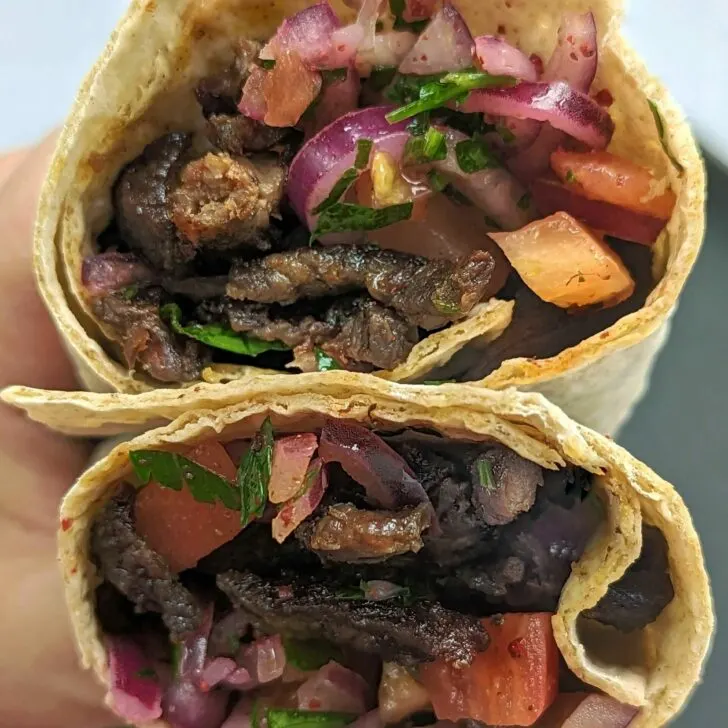
What is Tantuni?
Tantuni is a popular Turkish meal, but the city of Mersin is well known for this savory dish consisting of lamb, beef, or chicken that’s boiled, then stir-fried. Top it with fresh tomatoes and sumac onions for signature flavor, and serve the mixture on thin lavash or use it to fill a sub roll and make a Tantuni sandwich.
Ingredients You’ll Need
- Lamb: Cut lamb into thin strips or smaller cubes. Lamb is common and my personal favorite, but popular restaurants in Turkey also serve tantuni with beef ribeye or chicken thighs.
- Avocado Oil: Traditional recipes call for cottonseed oil, but it is hard to find and expensive. Instead, I use avocado oil because of its high smoking point.
- Spices: Generously season the lamb with salt and paprika.
- Lavash: Try to find thin lavash. However, you can also use a pita, tortilla, or sub roll. Here is the lavash I use.
- Tomatoes: Beef steak or Roma tomatoes are peeled and diced to add freshness and bright color.
- Sumac Onions: Prepare sumac onions with red onions, parsley, lemon juice, olive oil, and citrusy sumac.
How to Make Tantuni Wraps
The full recipe with measurements is in the recipe card below.
Step 1: Prepare the lamb by cutting it into thin strips.
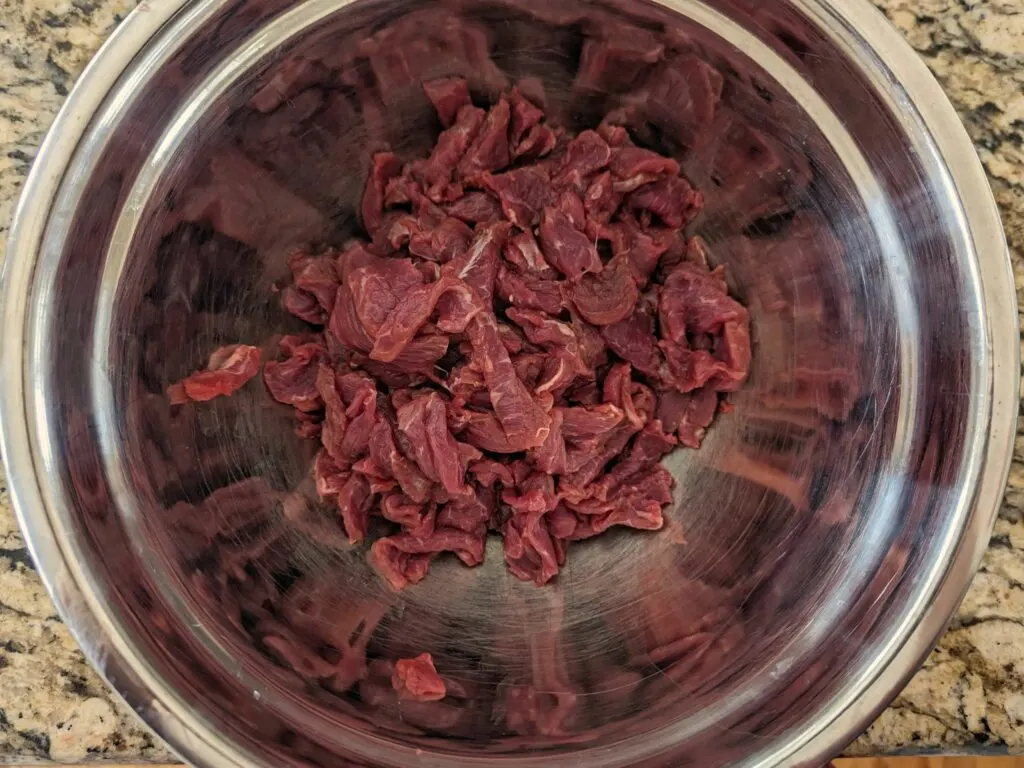
Step 2: Warm two tablespoons of avocado oil in a Dutch oven. Add the lamb to the pan, cover, and boil it over medium heat. Stir every 3 minutes to ensure even cooking.
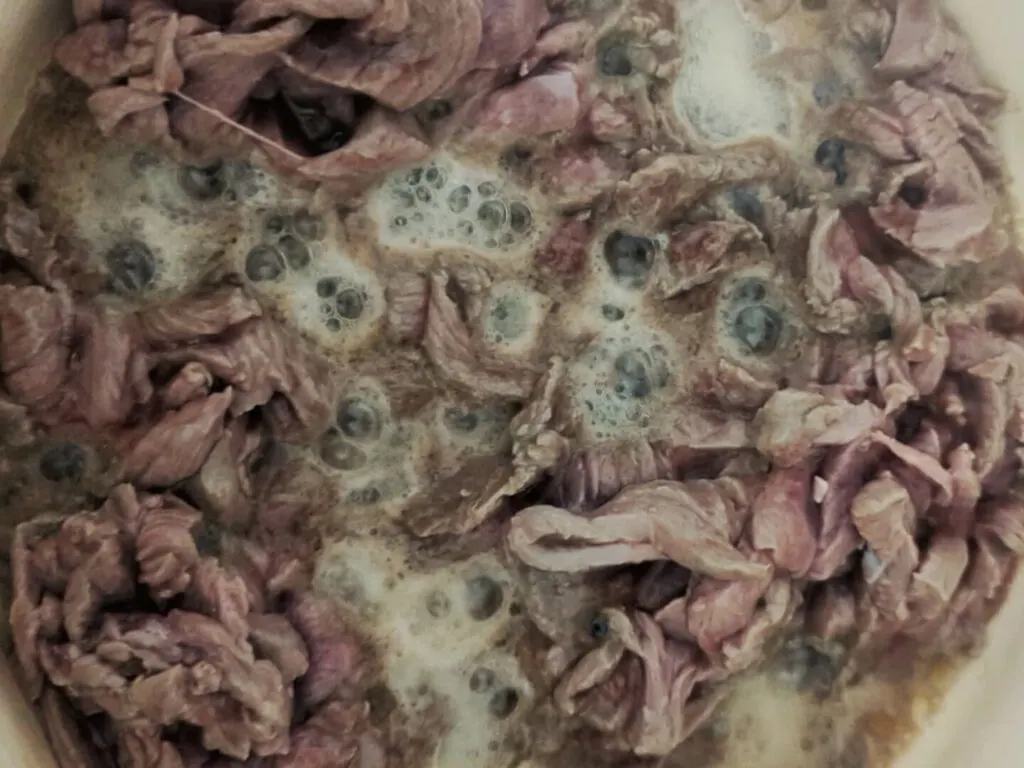
Step 3: Once the lamb changes color and you see water at the bottom of the pan, continue cooking for 20-30 minutes until the water reabsorbs. Set the meat aside.

Step 4: Meanwhile, chop the tomatoes and prepare the sumac onions. Toss the onion slices, parsley, lemon, salt, and olive oil in a bowl and massage to combine for 2-3 minutes. Cover and set them aside.
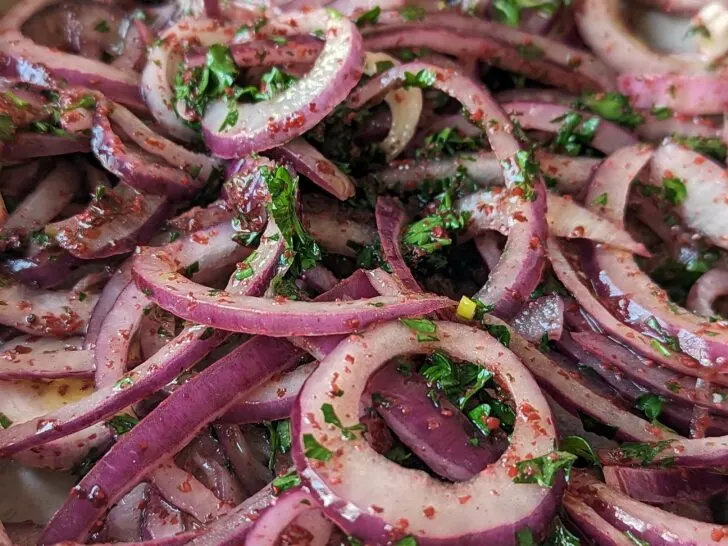
Step 5: Preheat the wok and add 2 tablespoons of oil. Let the pan heat until it is smoking. Add a third of the lamb to the center of the pan and fry it. Once the meat absorbs the oil, add some water. Season with 1½ teaspoons of salt and 2 teaspoons of paprika and stir to combine.
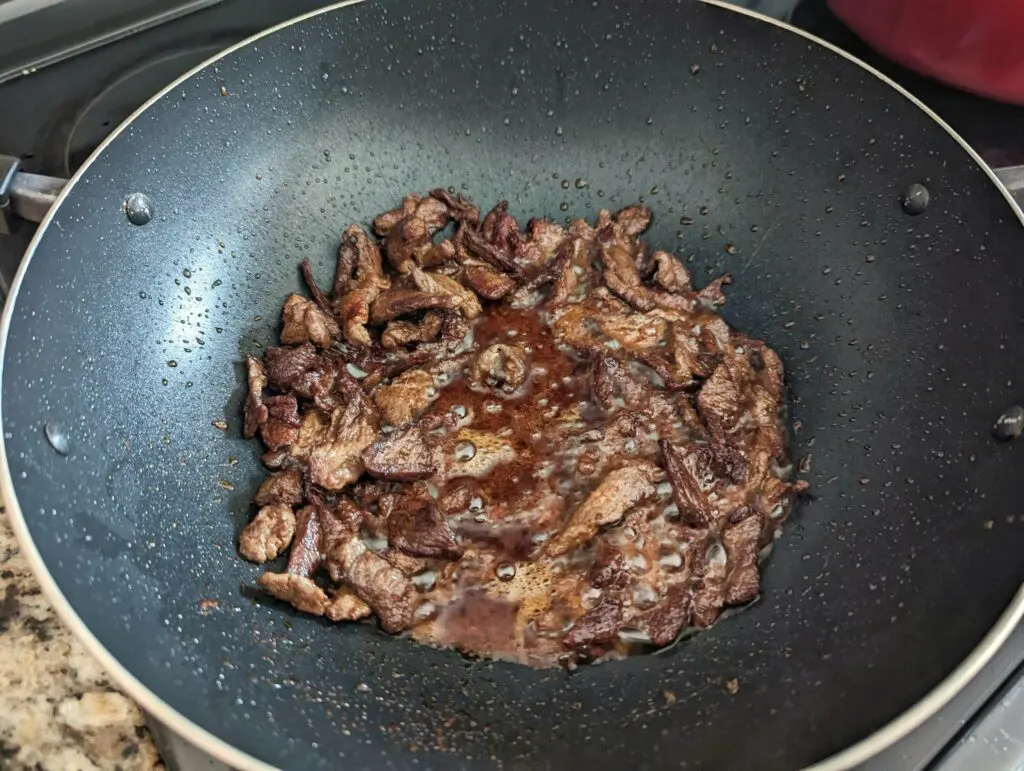
Step 6: Place the warm lavash over the meat to absorb the liquid and flavor, then add the lamb to the bread and top it with tomatoes and sumac onions. Roll the lavash and set it aside. Then, repeat this process twice with the remaining lamb (see wrapping instructions).
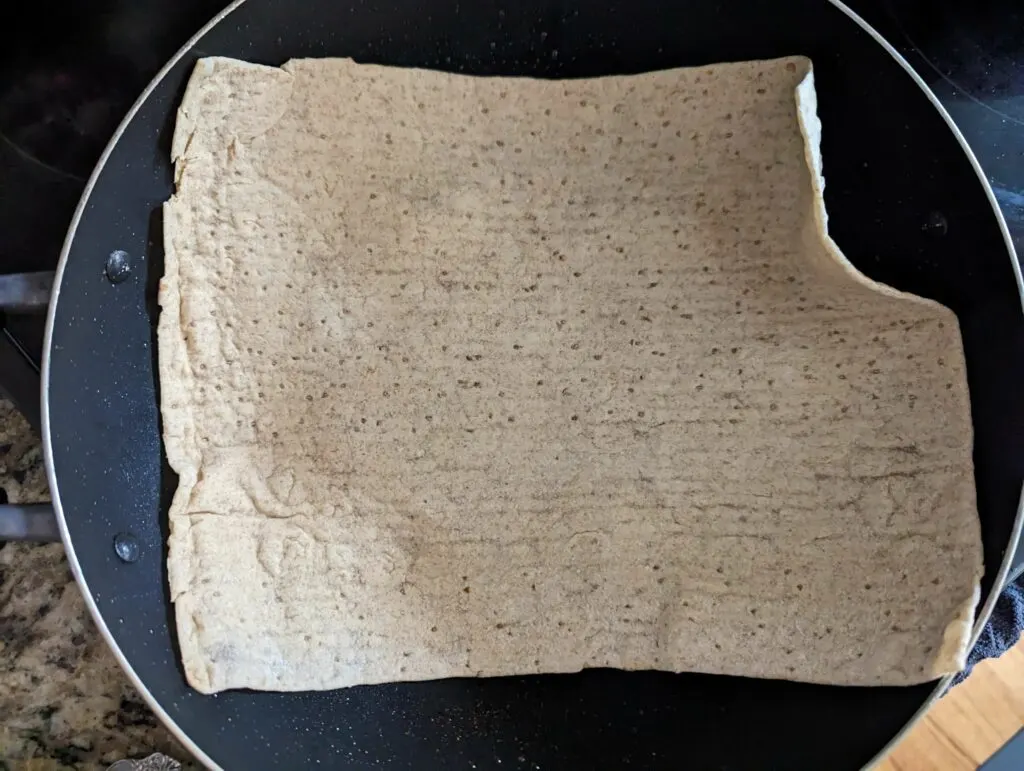
Step 7: Cut the lavash in half or bend in into a u-shape and serve with fresh lemon wedges, spiced yogurt, or pickled green chiles.
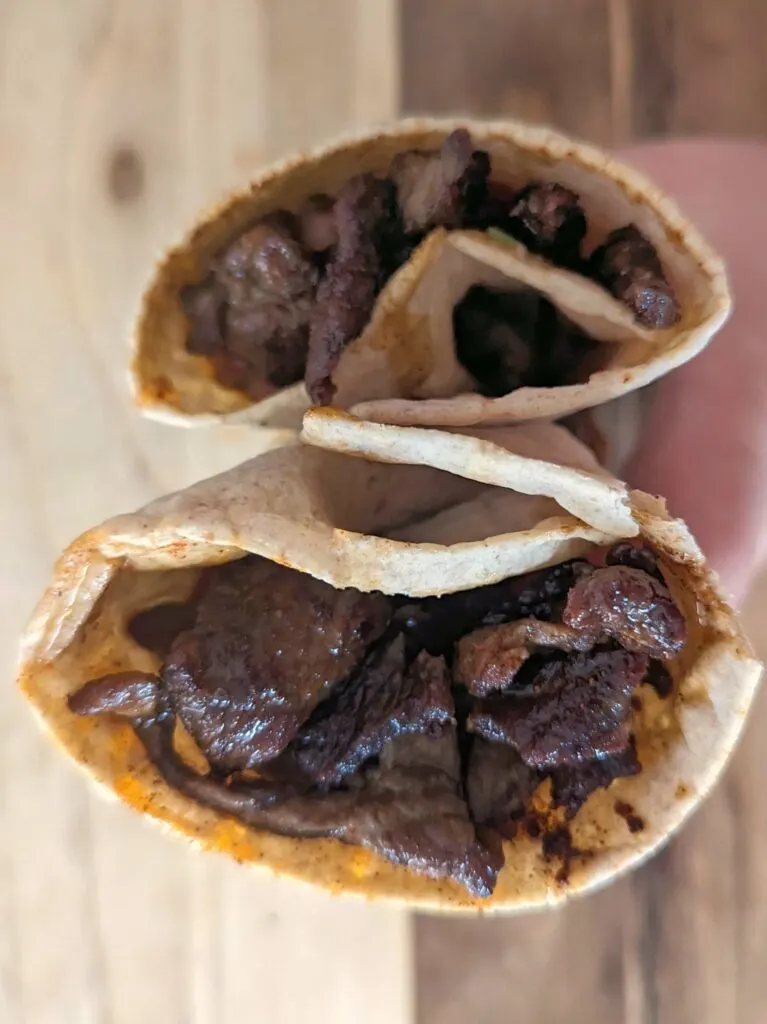
How to Roll the Turkish Lamb Wrap
Step 1: Fill the wrap with 1/3 of the lamb mixture and top it with fresh tomatoes and sumac onions.
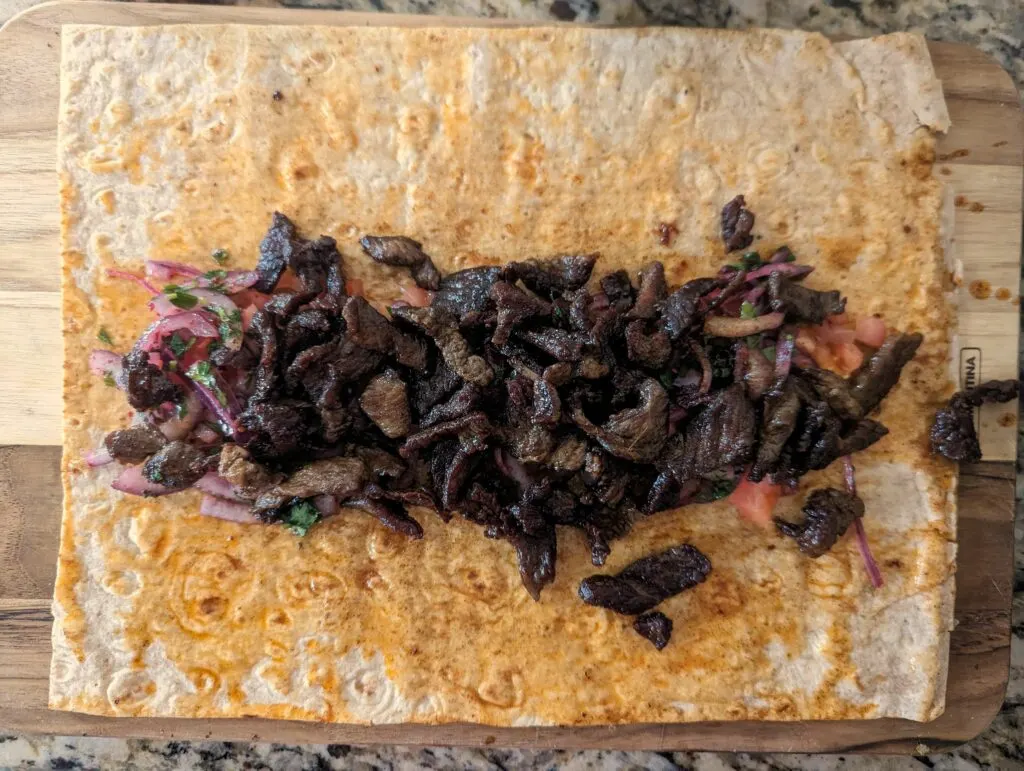
Step 2: Take one end of the lavash and use it to cover the lamb and toppings; tuck it underneath and continue to roll it.
Cut the lavash in half or form it into a u-shape and serve with fresh lemon wedges or pickled green chilis.

Expert Tips
- Trim the fat and remove the silver skin from the lamb for tender, even cooking.
- You don’t need to add water to the Dutch oven as the lamb cooks. Like kedjenou, the lamb releases natural juices that tenderize the meat and infuse it with rich flavor.
- After boiling, the lamb traditionally fries in a pan called a Tantuni tavasi. Since I don’t have access to one (and probably you don’t either), use a hot wok, karahi, or heavy-bottomed pan.
- I keep a glass of water next to the wok to use as the lamb fries. Add it, as necessary, once the lamb begins to absorb the oil.
If you enjoy this recipe, try one of these lamb favorites!
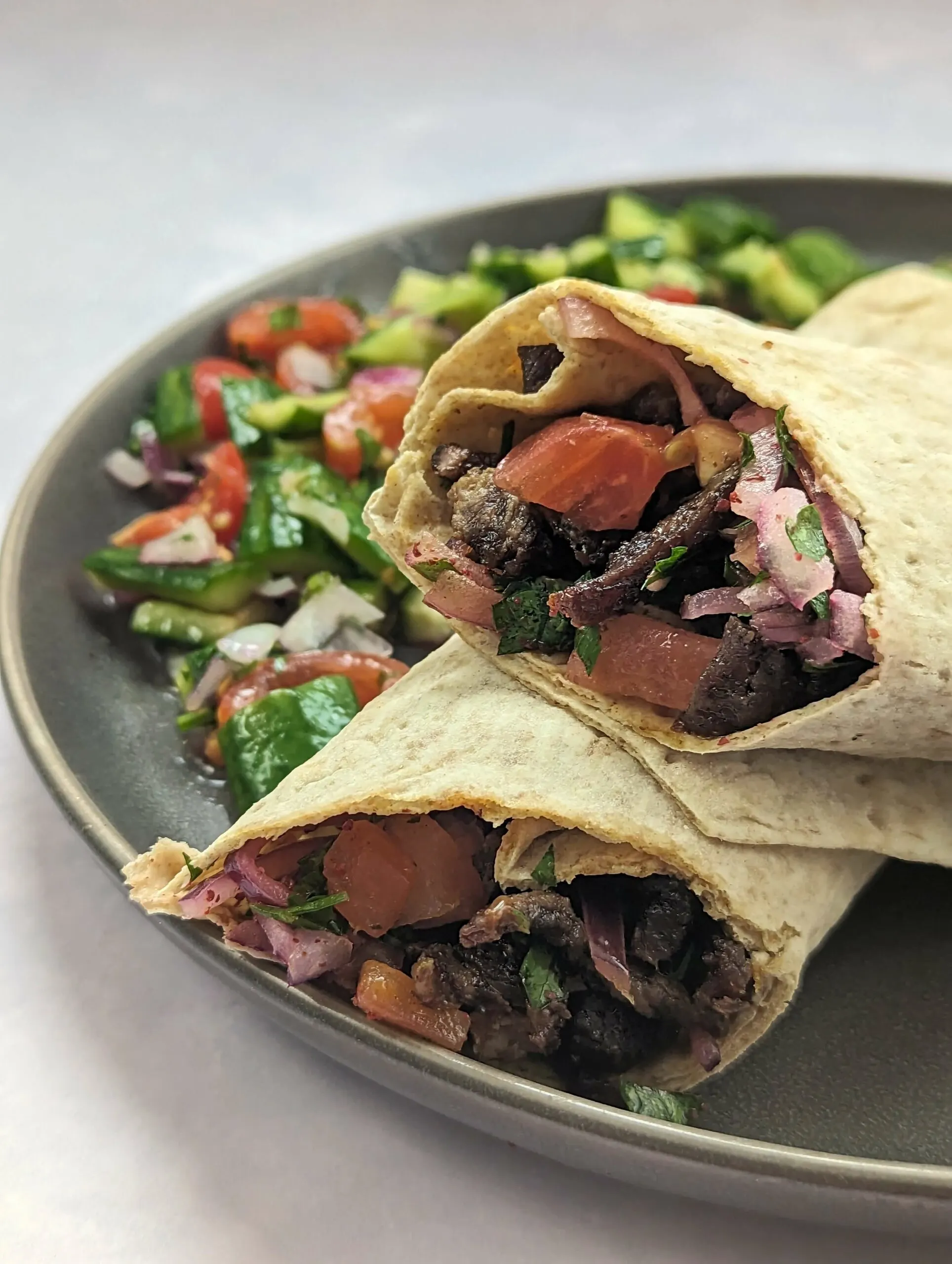
Serving Suggestions
Tantuni is often served with a side of pickled peppers, cucumbers, or turnips, but here are some other tasty options:
- Avocado Cucumber Tomato Salad, Piyaz, çoban salatasi, Chickpea Salad
- Butter Bean Hummus
- Roasted Potatoes
- Cacik
- Rice Pilaf, Bulgar Wheat
- Haydari
What to do with the Leftovers
- Refrigerate – Store leftovers in an airtight container for 2-3 days.
- Freeze – Let the dish to cool completely, and transfer it to a freezer-safe container or bag. The lamb will freeze for 2-3 months.
- Thaw – Defrost the frozen lamb in the fridge overnight.
- Reheat – Wrap the leftovers in foil and warm them in the oven, or you can reheat individual servings in the microwave.
- Repurpose – Use the lamb to make stew, top a salad, fill a sandwich, or make a breakfast hash.
Frequently Asked Questions
What is tantuni made of?
Make the popular Turkish wrap using thinly sliced seasoned lamb, beef, or chicken, and wrap it with onions and parsley. Some variations of tantuni include other ingredients, such as garlic, bell peppers, and lemon juice.
How is tantuni served?
Lavash is the most common way to serve the wrap. However, some restaurants serve it in sub-style bread as a sandwich. You can easily use the lamb mixture to fill pitas or tortillas if that is what you have on hand.
How is tantuni cooked?
Tantuni traditionally cooks in a vessel called a tantuni tavasi. It has a hollow center for the meat to fry, and the outer ridge stores the boiled lamb waiting to cook. Since I don’t have access to a pan like this, I use a wok and cook the lamb in batches to get the same direct heat.
More International Dinner Ideas:
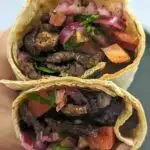
Tantuni (Turkish Lamb Wrap)
- Small Bowl
- Wok , Karahi, Sac, Tantuni Tavasi, or Heavy-Bottomed Pan
- 2 pounds lamb, trimmed and cut into thin slices
- 6 tablespoons avocado oil, divided
- 3 tablespoons water, divided
- 3½ teaspoon salt, divided
- 6 teaspoon paprika, divided
- 1 large red onion, thinly sliced
- 1 cup fresh parsley, finely chopped
- 1 lemon, juiced
- 2 tablespoons olive oil
- 1 tablespoon sumac, ground
- ½ teaspoon salt
- 3 lavash
- 2 tomatoes, peeled and diced
- 1 lemon, cut into wedges, to garnish
- Prepare the lamb by cutting it into thin strips.
- Warm two tablespoons of avocado oil in a Dutch oven. Add the lamb to the pan, cover, and boil it over medium heat. Stir every 3 minutes to ensure even cooking.
- Once the lamb changes color and you see water at the bottom of the pan, continue cooking for 20-30 minutes until the water reabsorbs. Set the meat aside.
- Meanwhile, chop the tomatoes and prepare the sumac onions. Toss the onion slices, parsley, lemon, salt, and olive oil in a bowl and massage to combine for 2-3 minutes. Cover and set them aside.
- Preheat the wok and add 2 tablespoons of oil. Let the pan heat until it is smoking. Add a third of the lamb to the center of the pan and fry it. Once the meat absorbs the oil, add some water. Season with 1½ teaspoons of salt and 2 teaspoons of paprika and stir to combine.
- Place the warm lavash over the meat to absorb the liquid and flavor, then add the lamb to the bread and top it with tomatoes and sumac onions. Roll the lavash and set it aside. Then, repeat this process twice with the remaining lamb (see wrapping instructions).
- Cut the lavash in half or form it into a u-shape and serve with fresh lemon wedges or pickled green chilis.
- Trim the fat and remove the silver skin from the lamb for tender, even cooking.
- You don’t need to add water to the Dutch oven as the lamb cooks. Like kedjenou, the lamb releases natural juices that tenderize the meat and infuse it with rich flavor.
- After boiling, the lamb traditionally fries in a pan called a Tantuni tavasi. Since I don’t have access to one (and probably you don’t either), use a hot wok, karahi, or heavy-bottomed pan.
- I keep a glass of water next to the wok to use as the lamb fries. Add it, as necessary, once the lamb begins to absorb the oil.
- The nutritional information shown is an estimate provided by an online nutrition calculator. It should not be considered a substitute for professional advice.


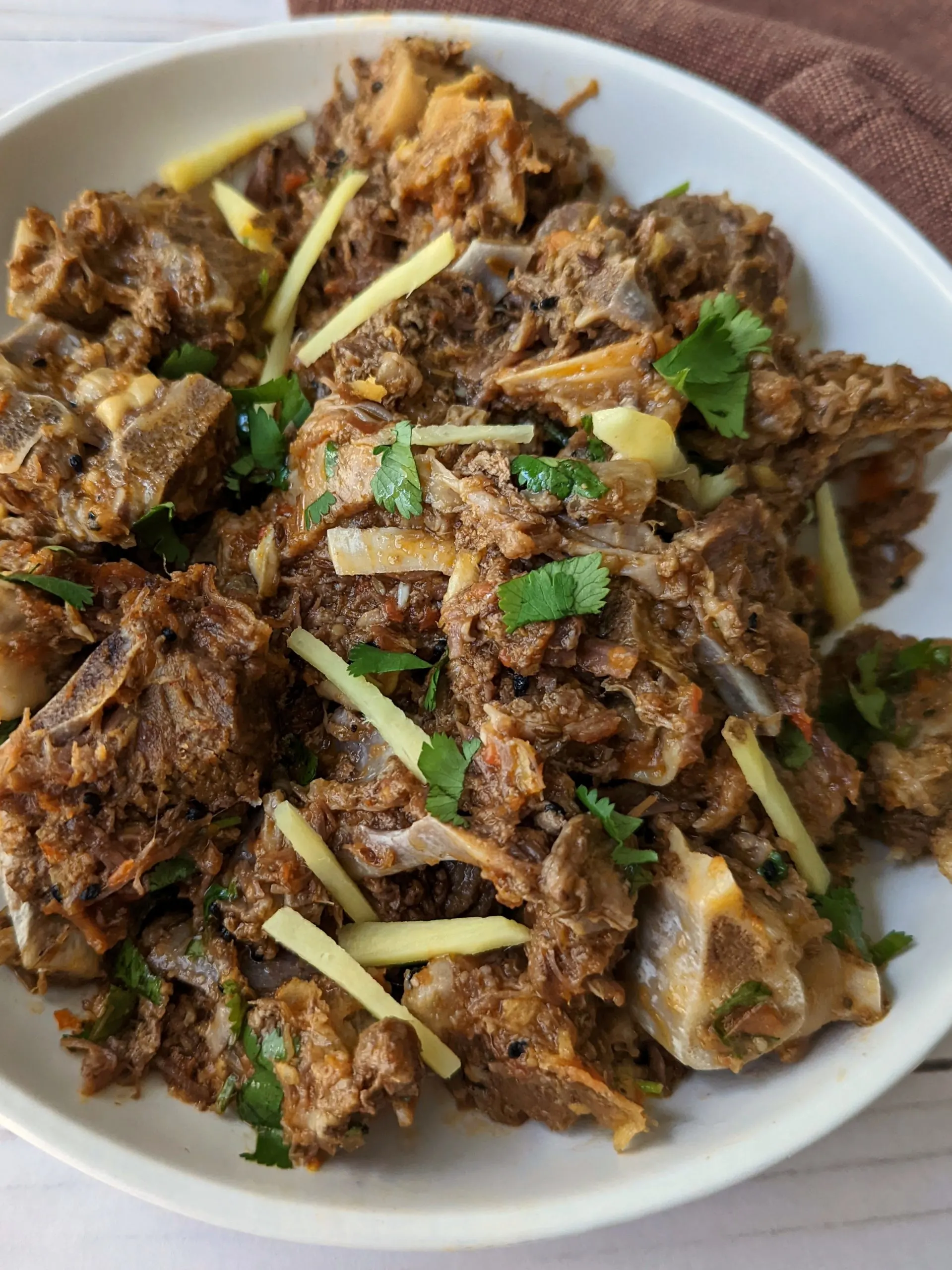
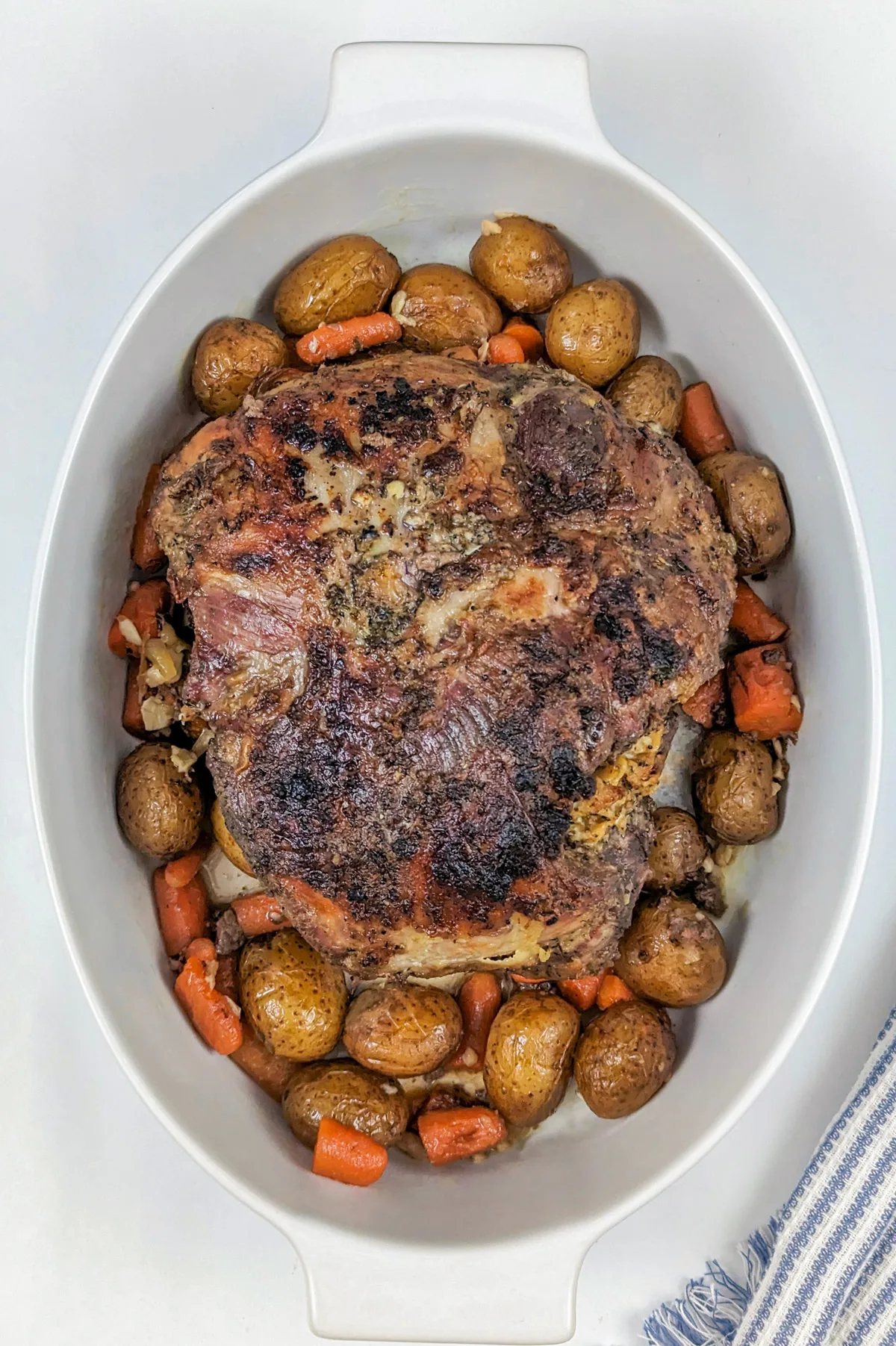
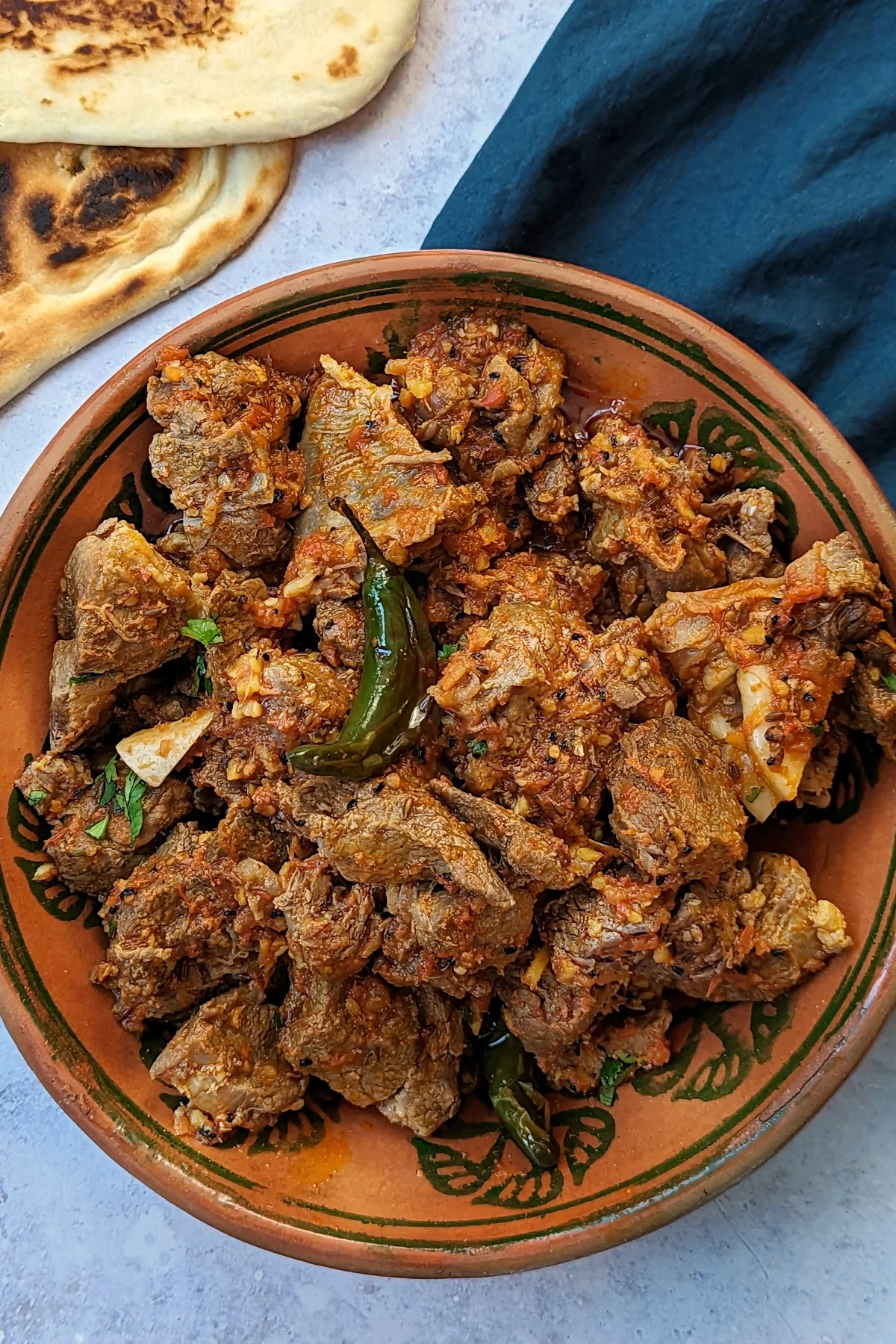
Annie
Wednesday 28th of December 2022
These lamb wraps were an absolute hit at our dinner table. The flavor of the onions is so unique and complements the dish very well! I wish we had leftovers but our little boy ate most of the lamb meat. I definitely recommend these wraps from Tressa.
Tressa Jamil
Thursday 29th of December 2022
Isn't the best when your littles enjoy the meal?